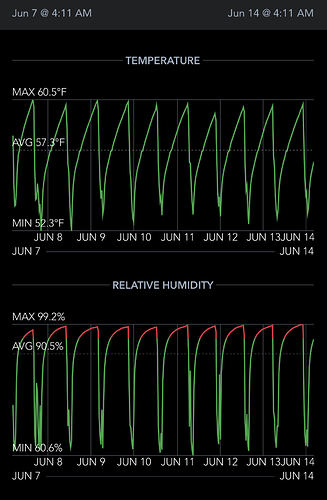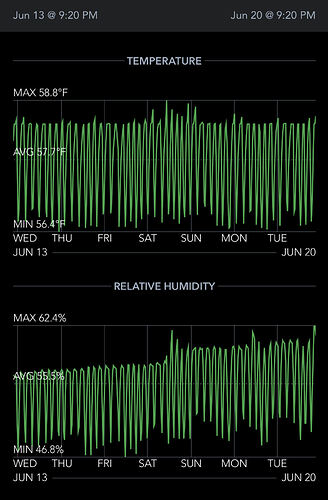Noah,
We had briefly corresponded via PM but I figured I’d write out my small odyssey and some recommendations here -
I too have a Wine Enthusiast brand fridge that deals with excessive humidity. I live in a humid climate and really pretty early on it was clear my fridge just did a poor job with humidity management. I kinda sucked it up and did basic troubleshooting to little avail. I was on the verge of a move and sort of gave up until after the move, and then the movers broke the fridge door during the move. Due to supply chain and Covid etc I didn’t get my replacement door for 1 year but as soon as the fridge was up again the humidity problem returned and of course I’m out of warranty now. There were no WE approved service providers in my area so I got a basic Mr. Appliance service tech to come out and look at it. The guy was friendly enough and basically said, yes the fridge is working, yes the drainage pathway in the fridge isn’t blocked, the fridge is just bad at draining the condensate for reasons he wasn’t really sure of, he thought maybe tilting the fridge slightly towards the drain hole would help ( spoiler, it didn’t) but otherwise couldn’t come up with any meaningful solution.
@MChang has an absolutely excellent suggestion in SensorPush, these little sensors are amazing, you can just set them up as local sensors which your phone will connect to with bluetooth, or buy a gateway so you can monitor your fridges or whatever else you want from anywhere you have internet access (no fee for cloud access). I installed these and it’s clear that for my climate and the ability of the fridge to clear moisture, the cooling cycling is just way too long and infrequent. Why it is programmed to cool down 8 degrees and then turn off is beyond me, this allows way too much humidity to build back up inbetween cycles. I would suggest to anyone dealing with humidity to install a sensor in the fridge. It has been really helpful for me. FWIW I talked to WE support about this range of temperature swings and they told me that was “normal operation”.
EDIT: I totally forgot to add that Sensorpush customer support is top-notch. When my gateway stopped functioning, not only did they send me a new gateway basically no questions asked, but when we were working through troubleshooting, they of their own accord were able to see it still plugged in pinging their servers, reset it and my account to repair it, and just told me to keep the extra gateway.
Lastly if anyone is just at their wits end and needs a new fridge I’d highly recommend reaching out to Jim Mackey at Wine Appreciation - no affiliation or disclosures here, he has just come in clutch for me when my only available offsite storage option abruptly closed and even offered some pro bono advice and suggestions dealing with the aforementioned humidity problem.
Attached images - SensorPush data from the Humid fridge, you can see the temperature swings are way too wide and the cooling only turns on on average once every 18 hours or so. The second image is of a fridge in my hot garage which maintains in comparison an iron grip on both temperature and humidity in a much more extreme environment.
Humid Fridge
Properly Operating Garage Fridge

